Unlocking the Potential of CFD Trading: Your Blueprint for Platforms, Strategies, and Risk Management
Are you curious about how to participate in global financial markets without actually owning the assets? Welcome to the dynamic world of Contracts for Difference (CFDs), a versatile financial instrument that allows traders to speculate on price movements across a vast array of markets. Whether you’re a seasoned investor looking to diversify or a newcomer eager to understand modern trading, grasping the fundamentals of CFDs, the platforms that facilitate their trading, and the essential strategies to navigate this landscape is paramount. In this comprehensive guide, we’ll break down everything you need to know, from the core mechanics of CFDs and how to choose a robust trading platform to effective strategies and crucial risk management techniques.
This article will equip you with a solid understanding of CFD trading, exploring its benefits, inherent risks, and how it compares to other financial instruments. We’ll delve into the critical features that make a trading platform stand out and discuss various approaches to maximize potential gains while safeguarding your capital. Our goal is to provide you with the knowledge to make informed decisions and approach the fast-paced CFD market with confidence.
What Are CFDs and How Do They Work?
Let’s start with the basics: What exactly is a **Contract for Difference (CFD)**? Simply put, a CFD is a derivative contract between two parties – typically you, the trader, and a broker – to exchange the difference in the price of an asset from the time the contract is opened until it is closed. The key takeaway here is that you never actually own the underlying asset, whether it’s a stock, a commodity, a currency pair, or an index. Instead, you’re speculating on its price movement. 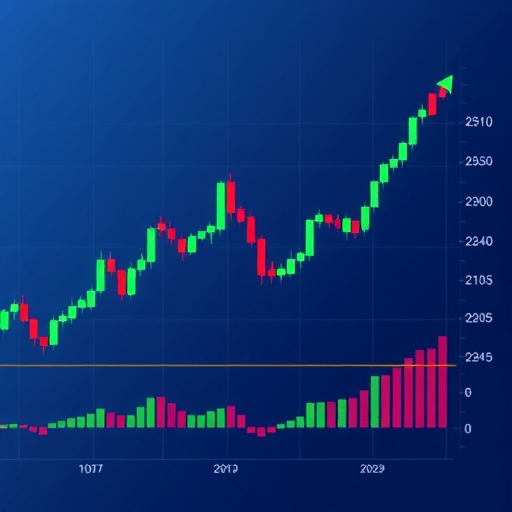
Understanding these core characteristics helps solidify the fundamental nature of CFD trading.
| Feature | Description |
|---|---|
| Ownership | No direct ownership of the underlying asset; speculation on price movements. |
| Leverage | Allows control of a large market position with a smaller capital outlay (margin). |
| Market Direction | Ability to profit from both rising (long) and falling (short) markets. |
| Expiration | Typically no fixed expiration date, offering flexible holding periods. |
| Costs | Primarily spreads, overnight financing (swaps), and sometimes commissions. |
Imagine you believe the price of a certain stock, like Apple (AAPL), is going to rise. With a CFD, you would open a “buy” position (also known as going **long**). If Apple’s stock price increases, your CFD’s value goes up, and you profit from that difference when you close the contract. Conversely, if you think the price will fall, you would open a “sell” position (going **short**). If the price indeed drops, you again profit from the difference. This ability to profit from both rising and falling markets is a significant advantage of CFD trading.
A core feature of CFDs is **leverage**. Leverage allows you to control a large position in the market with a relatively small amount of capital, known as **margin**. For example, with 1:30 leverage, you could control $3,000 worth of an asset with just $100 of your own money as margin. While this can significantly magnify your potential profits, it’s crucial to understand that it also amplifies your potential losses by the same factor. Think of leverage like a double-edged sword: it gives you more power, but demands more caution.
When you trade CFDs, there are typically a few costs involved:
- Spreads: This is the difference between the buy and sell price of an asset, which is essentially the broker’s fee for executing your trade.
- Swaps (Overnight Financing Costs): If you hold a CFD position open overnight, you might incur a small fee or receive a small payment, depending on the asset and the direction of your trade.
- Commissions: While many CFDs are commission-free (with the cost built into the spread), some assets, particularly individual stocks, might involve a small commission.
CFDs offer broad market access, allowing you to trade various global assets like **forex** (currency pairs), **stocks**, **commodities** (e.g., gold, oil), **indices** (e.g., S&P500), and even **cryptocurrencies** from a single trading account. Unlike futures contracts, CFDs typically have no fixed expiration date, giving you the flexibility to hold positions for as long as you wish.
CFDs offer access to a remarkable range of financial markets, enabling diversification and exposure to various asset classes. These commonly include:
- Forex (Foreign Exchange): Trading currency pairs like EUR/USD or GBP/JPY.
- Stocks/Equities: Speculating on the price movements of individual company shares, such as Apple, Google, or Tesla.
- Commodities: Trading raw materials like Gold, Silver, Crude Oil, or Natural Gas.
- Indices: Betting on the performance of a basket of stocks, represented by major indices like the S&P 500, FTSE 100, or DAX 40.
- Cryptocurrencies: Trading digital assets such as Bitcoin, Ethereum, or Ripple against fiat currencies.
Choosing Your Digital Command Center: Top CFD Platforms and Essential Features
The **CFD trading platform** you choose is your digital command center, and its quality can significantly impact your trading experience and success. It’s the interface through which you access markets, execute trades, and manage your positions. So, what makes a platform truly stand out? We believe a superior CFD platform must excel in several key areas:
- Market Access: A top-tier platform provides access to a wide array of tradable assets, including major and minor forex pairs, thousands of global stocks, popular commodities, leading indices, and a growing selection of cryptocurrencies.
- Execution Speed: In fast-moving markets, every millisecond counts. Look for platforms that boast lightning-fast execution speeds, often quoted as sub-50-millisecond. This ensures your orders are filled at or very close to your intended price, which is critical for various order types like market, limit, stop, and trailing stop orders.
- Charting & Analytics: Professional-grade charting tools are non-negotiable. This includes a comprehensive suite of **technical indicators** (such as MACD, RSI, Bollinger Bands, Fibonacci retracements), multiple chart types, and customizable timeframes. An integrated **economic calendar** and live news feeds can also provide crucial context for your trades.
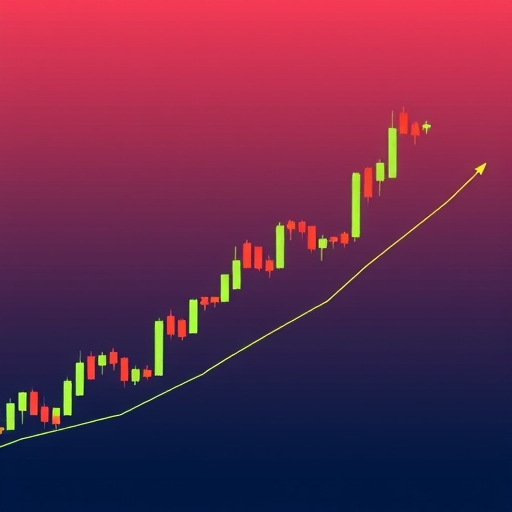
- Risk Controls: Robust, built-in **risk management** features are essential. These include customizable **stop-loss** and **take-profit** settings, **margin warnings**, and ideally, **negative balance protection**, which ensures you cannot lose more than the funds in your trading account.
- User Experience (UX): A sleek, intuitive, and mobile-optimized interface is key. The platform should be easy to navigate, offer one-click trading, customizable dashboards, and reliable mobile apps for trading on the go.
- Education & Support: Especially for beginners, access to educational resources like demo accounts, webinars, tutorials, and responsive 24/7 customer support via live chat is invaluable for onboarding and continuous learning.
- Security & Regulation: This is paramount. Always choose a broker whose platform adheres to strict regulatory standards (e.g., from the FCA, CySEC, ASIC). Look for features like segregated client funds, multi-factor authentication (MFA), and advanced encryption to protect your capital and personal information.
- Transparent Pricing: The platform should clearly display live pricing, real-time cost breakdowns (spreads, swaps), and overnight financing terms, ensuring you understand exactly what you’re paying.
Some of the top platforms that are highly regarded and continue to innovate for 2025 include well-known names like **MetaTrader 5 (MT5)** and **cTrader**, as well as emerging solutions like **Match-Trader**, **X Open Hub**, and **TradeLocker**. Since CFDs are often over-the-counter (OTC) products, meaning they are traded directly between you and your broker rather than on a central exchange, selecting a regulated, transparent, and high-performing broker is absolutely crucial for your safety and success. 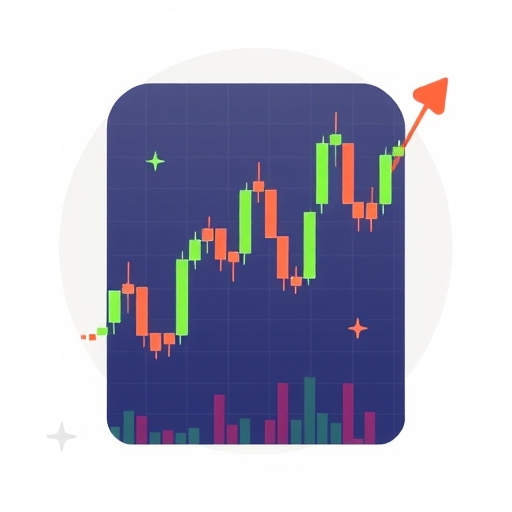
A summary of crucial features to look for in your CFD trading platform:
| Feature Category | Key Aspects |
|---|---|
| Data & Tools | Real-time quotes, professional charting, technical indicators, economic calendar, news feed. |
| Execution | Lightning-fast order execution, various order types (market, limit, stop, trailing stop). |
| Risk Management | Stop-loss/take-profit, margin warnings, negative balance protection. |
| Accessibility | Web-based platform, desktop applications, robust mobile apps for iOS and Android. |
| Support & Education | 24/7 customer support, demo accounts, webinars, tutorials, educational materials. |
Strategies for Success: Navigating the CFD Market with Confidence
Once you understand how CFDs work and have chosen a reliable platform, the next step is to develop and implement effective trading strategies. A well-defined strategy, coupled with disciplined **risk management**, is your roadmap to navigating the volatile CFD market.
At its most basic, CFD trading involves two primary positions:
- Long (Buy): You open a long position when you anticipate the asset’s price will rise. Your goal is to sell it later at a higher price.
- Short (Sell): You open a short position when you anticipate the asset’s price will fall. Your goal is to buy it back later at a lower price, profiting from the decline.
One powerful application of CFDs is **hedging**. If you own a physical stock portfolio but anticipate a short-term market downturn, you can use CFDs to offset potential losses. For example, if you own 100 shares of Boeing (BA) but expect a temporary dip, you could open a “sell” CFD position on 100 BA shares. If the price falls, the profit from your CFD trade could help mitigate the loss on your physical shares.
Beyond these basics, traders employ a variety of strategies:
- Trend Following: This involves identifying a prevailing market trend (up or down) using tools like **moving averages** and **oscillators** and trading in that direction. The idea is to “ride the wave” for as long as it lasts.
- Breakout Trading: Traders using this strategy look for prices to “break out” of established ranges or patterns, often identified with indicators like **Bollinger Bands** or **fractals**. A breakout suggests a strong move in a new direction.
- Scalping: This is a very short-term strategy where traders make numerous small trades throughout the day, aiming to profit from minor price fluctuations. It requires intense focus and rapid execution, often utilizing multiple technical indicators simultaneously.
- Swing Trading: Unlike scalping, swing traders hold positions for several days or weeks, aiming to capture larger price swings (swings) within a trend. They often look for market corrections or pullbacks as entry points.
- News Playing: Trading based on economic news releases, earnings reports, or geopolitical events. This strategy requires quick reactions to market volatility triggered by significant announcements.
- Contrarian Investing: This strategy involves going against the prevailing market sentiment, buying when others are selling and selling when others are buying, believing the market is overreacting.
To enhance decision-making, traders often combine various analytical approaches before entering or exiting a trade. These include:
- Technical Analysis: Studying historical price charts and market data to identify patterns, trends, and potential future price movements using indicators.
- Fundamental Analysis: Evaluating economic, financial, and other qualitative and quantitative factors to determine the intrinsic value of an asset and predict its future price direction.
- Sentiment Analysis: Assessing the overall mood or attitude of market participants towards a particular asset or market, often derived from news headlines, social media, and market reports.
No matter your chosen strategy, **risk management** is the bedrock of successful CFD trading. Never underestimate its importance! Key practices include:
- Using Stop-Loss Orders: These automatically close your trade if the price moves against you by a predetermined amount, limiting your potential losses.
- Limiting Leverage: While leverage can be tempting, using excessive leverage dramatically increases your risk. Many experienced traders advocate for conservative leverage ratios.
- Conducting Thorough Analysis: Combine **technical analysis** (studying charts and indicators) with **fundamental analysis** (evaluating economic data, company news, and industry trends) to make informed decisions.
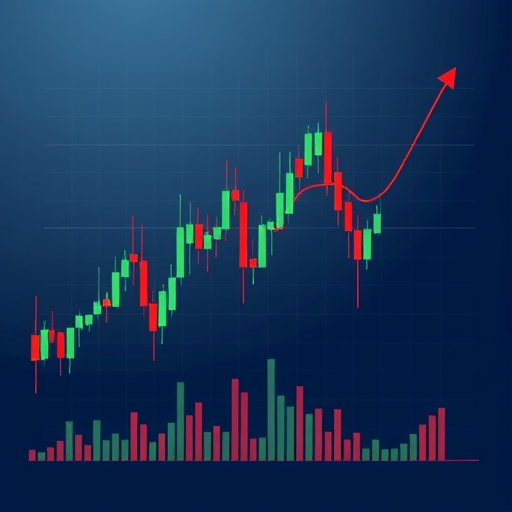
- Maintaining Sufficient Account Capital: Always ensure you have enough funds in your account to cover potential losses and avoid **margin calls**, where your broker requests additional funds to maintain your open positions.
- Diversifying Investments: Don’t put all your capital into a single trade or asset class. Spreading your risk across different markets can help cushion the blow if one trade goes sour.
Effective risk management is paramount in CFD trading, helping to protect capital and sustain long-term trading activity.
| Practice | Description |
|---|---|
| Stop-Loss Orders | Automatically close a trade when the price reaches a specified level, limiting potential losses. |
| Take-Profit Orders | Automatically close a trade when the price reaches a specified profit level, securing gains. |
| Leverage Control | Using conservative leverage ratios to avoid excessive exposure and amplified losses. |
| Position Sizing | Determining the appropriate number of units to trade based on account size and risk tolerance. |
| Diversification | Spreading investments across different asset classes or markets to reduce overall risk. |
Ultimately, developing a comprehensive and strictly adhering to a **trading plan** is crucial. This plan should outline your entry and exit criteria, risk tolerance, and the specific strategies you will employ.
CFD Trading: Benefits, Risks, and the Regulatory Landscape
CFD trading offers a unique set of advantages that attract many traders, but it also comes with inherent risks that must be understood and respected. We believe that understanding both sides of the coin is vital for any participant.
Let’s explore the **benefits** first:
- Capital Efficiency: Thanks to leverage, you can control a much larger position with a smaller initial capital outlay, making it accessible for traders with varying account sizes.
- Broad Market Access: CFDs provide unparalleled access to a diverse range of global markets – from **Forex** and **stocks** to **commodities** and **cryptocurrencies** – all from a single trading account. This allows for significant diversification.
- Ability to Go Short: You can easily profit from falling markets by selling assets you don’t own, a feature often more complex and restricted with traditional stock trading.
- Hedging Opportunities: As discussed, CFDs are excellent tools for hedging existing investment portfolios against adverse price movements.
- No Expiration Dates: Unlike futures or options, many CFD contracts do not have a fixed expiration date, offering flexibility in how you hold a position.
- Lower Transaction Costs: Compared to traditional asset trading, CFDs often have lower entry barriers and transaction costs, though spreads and overnight financing costs still apply.
However, it’s equally important to be aware of the **risks**:
- Amplified Losses due to Leverage: While leverage can magnify profits, it can also significantly amplify losses, potentially exceeding your initial deposit if not managed carefully. This is the primary risk associated with CFD trading.
- Market Volatility: Financial markets can be highly volatile, especially during major economic announcements or geopolitical events. Rapid price swings can quickly impact your open positions.
- Overnight Financing Costs: Holding positions overnight incurs swap fees, which can eat into profits or exacerbate losses over longer periods.
- Broker Risk: Since CFDs are over-the-counter products, the reliability and solvency of your chosen broker are critical. Always choose a regulated and reputable broker.
- Liquidity Risk: While major assets are highly liquid, some less popular CFDs might experience lower liquidity, leading to wider spreads and potentially unfavorable execution prices.
The **regulatory landscape** for CFDs varies significantly across different regions. It’s important to note that CFDs are **banned in some countries, notably the U.S.**, primarily due to their leveraged nature and the associated high risks for retail investors. However, they are widely available and popular in Europe, Asia, Australia, and other regions.
In jurisdictions where CFDs are permitted, regulatory bodies like the **European Securities and Markets Authority (ESMA)**, the **Financial Conduct Authority (FCA)** in the UK, and the **Australian Securities and Investments Commission (ASIC)** impose strict requirements to protect retail traders. These often include:
- Leverage Limits: Capping the maximum leverage available for retail clients (e.g., 1:30 for major forex pairs).
- Negative Balance Protection: Ensuring that traders cannot lose more money than they have deposited in their accounts.
- Segregated Client Funds: Requiring brokers to hold client funds separately from their own operational capital.
- Mandatory Risk Warnings: Brokers must prominently display warnings about the high percentage of retail investor accounts that lose money trading CFDs.
When selecting a CFD broker, it is essential to verify their regulatory compliance with reputable authorities, which often include:
- Financial Conduct Authority (FCA): The regulatory body for financial services firms in the United Kingdom.
- Cyprus Securities and Exchange Commission (CySEC): The financial regulatory authority of Cyprus, a popular base for many CFD brokers in Europe.
- Australian Securities and Investments Commission (ASIC): The corporate, markets, financial services, and consumer credit regulator of Australia.
- Federal Financial Supervisory Authority (BaFin): The financial regulatory body for Germany.
- Financial Sector Conduct Authority (FSCA): The financial markets regulator in South Africa.
The lack of standardized global regulation makes choosing a verified and regulated broker paramount. Always check a broker’s regulatory status before depositing funds.
CFDs in Context: A Comparative Look at Other Financial Instruments
To truly appreciate the unique position of CFDs in the financial world, it’s helpful to compare them with other popular investment vehicles. This helps clarify when CFDs might be the right choice for your trading goals and when other instruments might be more suitable.
CFD vs. Share (Stock) Trading
When you buy shares of a company, you become a part-owner, gaining voting rights and potentially dividends. With CFDs, you simply speculate on the share’s price movement without ownership.
| Feature | CFD Trading | Share (Stock) Trading |
|---|---|---|
| Ownership | No ownership of underlying asset | Direct ownership of company shares |
| Leverage | High leverage available (e.g., 1:5, 1:10, 1:30) | Typically no leverage or very limited margin trading |
| Capital Required | Lower initial capital (margin) | Full value of shares required |
| Short Selling | Easy to go short (sell) | Can be complex, involves borrowing shares |
| Costs | Spreads, swaps, sometimes commissions | Commissions, stamp duty (in some regions) |
| Dividends | Adjustments made (receive if long, pay if short) | Receive actual dividends |
CFD vs. Spread Betting
Spread betting is similar to CFD trading in that you speculate on price movements without ownership, and it’s also a leveraged product. However, there are key differences:
- Regulation: CFDs are typically regulated as financial instruments, falling under dealer activity laws in many regions. Spread betting is often regulated as a form of gambling or bookmaking, particularly in the UK.
- Profit Threshold: CFDs have no upper profit threshold; your profit is directly tied to the price difference. Spread betting often involves “points” per movement, and your stake per point determines profit/loss.
- Taxation: In some regions (like the UK), profits from spread betting are tax-free, while CFD profits are subject to capital gains tax. This is a significant consideration, but tax rules vary widely by jurisdiction and personal circumstances.
CFD vs. Futures
Futures contracts are standardized agreements to buy or sell an asset at a predetermined price on a specific future date.
- Expiration Date: Futures have fixed expiration dates, meaning you must close or roll over your position by that date. CFDs typically have no expiration, offering more flexibility.
- Regulation: Futures are highly regulated and traded on centralized exchanges, offering high transparency and guaranteed fulfillment of obligations. CFDs are often OTC products.
- Margin: Both use margin, but futures contracts often require higher, more structured margin requirements.
- Liquidity: Futures markets are generally very liquid for major contracts. CFD liquidity depends on the broker’s offerings.
CFD vs. Options
Options give the holder the *right*, but not the obligation, to buy or sell an underlying asset at a specific price (strike price) on or before a certain date.
- Loss Limitation: Options have built-in loss limitation for the buyer (the premium paid). CFDs, due to leverage, can lead to losses exceeding your initial margin without proper risk management like stop-loss orders.
- Time Decay: Options lose value as they approach expiration (time decay). CFDs do not have this characteristic, though overnight financing costs can accumulate.
- Liquidity: Major options contracts are liquid, but many individual options can suffer from low liquidity. CFDs on popular assets generally offer high liquidity.
- Hedging: Options can be a very cheap way to hedge, offering specific risk profiles.
Forex CFDs vs. Stock CFDs
While both are CFDs, the underlying markets behave differently:
| Feature | Forex CFDs | Stock CFDs |
|---|---|---|
| Accessibility | 24/5 market access | Fixed trading hours (exchange-dependent) |
| Market Size | Largest financial market globally | Varies (blue-chip vs. small-cap) |
| Liquidity | Generally very high for major pairs | Varies significantly by stock |
| Volatility Drivers | Macroeconomic news, geopolitical events | Company-specific news, earnings, industry trends |
| Costs | Often lower spreads, higher leverage | Often higher spreads/commissions, lower leverage |
| Strategies | Favors short-term strategies due to high liquidity | Versatile for short to medium-term strategies |
Your choice between these depends on your preference for market hours, volatility drivers, leverage tolerance, and suitable strategy duration.
Conclusion
CFD trading presents a compelling opportunity for individuals seeking flexibility, leverage, and broad market access to speculate on price movements across a diverse range of financial assets. We’ve explored how these derivative contracts work, the crucial role of leverage and margin, and the various costs involved. We also emphasized the importance of selecting a robust trading platform with essential features like rapid execution, advanced charting, and stringent security measures.
Furthermore, we’ve outlined a spectrum of trading strategies, from basic long and short positions to more nuanced approaches like scalping and hedging, always reinforcing the non-negotiable role of disciplined risk management through tools like stop-loss orders and diversification. Finally, our comparative analysis highlighted the unique characteristics of CFDs compared to traditional stocks, futures, options, and spread betting, providing context for their place in the modern financial landscape.
While the potential for significant returns is attractive, it is crucial to approach this market with a solid understanding of its mechanics, a well-defined strategy, and rigorous risk management practices. By continuously educating yourself, selecting a reliable and regulated broker, and adhering to your trading plan, you can confidently navigate the CFD landscape and work towards your financial objectives.
Frequently Asked Questions (FAQ)
Q: What is the main difference between owning a stock and trading a CFD on a stock?
A: When you own a stock, you possess a share of the company, with potential voting rights and dividends. Trading a CFD on a stock means you are only speculating on its price movement without actual ownership, allowing you to profit from both rising and falling prices.
Q: Is CFD trading suitable for beginners?
A: CFD trading involves significant risks, particularly due to leverage, which can amplify both profits and losses. While accessible, it’s crucial for beginners to start with a demo account, thoroughly understand risk management, and use conservative leverage before committing real capital.
Q: Are CFDs regulated, and is it safe to trade them?
A: CFDs are regulated in many jurisdictions like Europe, Australia, and the UK, with measures such as leverage limits and negative balance protection to protect retail traders. However, they are banned in some countries, including the U.S. It is safe to trade CFDs only with a regulated and reputable broker that adheres to strict financial oversight.
Disclaimer: This article is for informational and educational purposes only and does not constitute financial advice. CFD trading involves a high level of risk and may not be suitable for all investors. You could lose more than your initial deposit. Please ensure you understand the risks involved before trading.


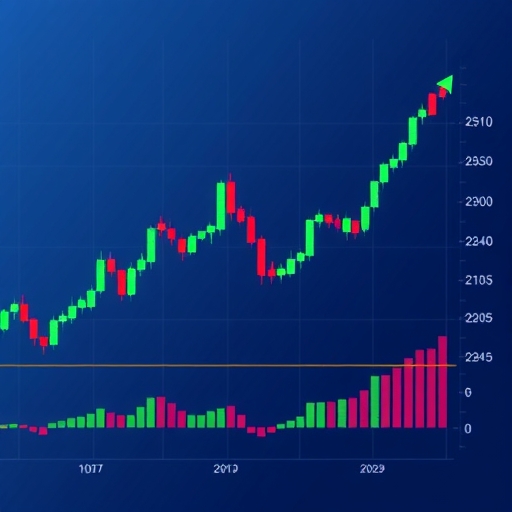
No responses yet